1517. A Legacy
The cabinet exhibition draws from the rich fundus of the Liberna Collection on the topic of theology and Reformation and follows the tracks of Martin Luther. It presents printed matter from the then-new spirit of the times – from the first printed bible, the “Gutenberg Bible”, which was still written in the Latin language, to the first Bible printed in the German language prior to Luther’s new translation, the “Mentelin Bible”, to the final version by Luther, the “Luther Bible”. In addition, other contemporary books document the effects on the European region. The exhibition moreover attempts to provide insights into how theological differences and incomprehension led to a kind of “culture of dispute through handbills”, which brought about an epochal turning point. It also makes it possible to recognize that the image of the new faith is not only rosy: Luther’s new way of thinking hence encouraged anti-Semitism. From the perspective of today, the flood of images in the aftermath of the Reformation can only be described as a cultural catastrophe. Last but not least, the effects of the Reformation are not all of a religious nature: The orthography of our High German today comes from Luther’s German translation of the Bible.
Publication
A trilingual book has also been published in connection with the exhibition. It contains an interview with the pastors of the Catholic and Protestant congregations in Mettingen. Based on the objects exhibited, the two of them converse about the positive and negative sides of the Reformation and the rapprochement between the two denominations in the ecumenical movement.
Accompanying Programme
A pedagogical programme with individual tours for school groups supplements the cabinet exhibition on this historically and culturally important event. A total of five excursions “On the Trail of the Reformation” take participants to three sites of the Reformation in the Tecklenburger Land: to the former County of Lingen, to the old County of Tecklenburg, and to the Osnabrück Land.
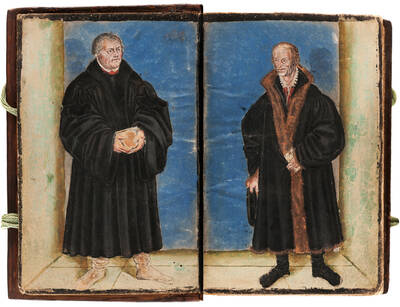
Martin Luther und Philipp Melanchthon, bemalte Vorsatzblätter der: Biblia sacra et novi Testamenti, Lyon: Claudius de Huchin (für Antoinus Vincentius), 1566
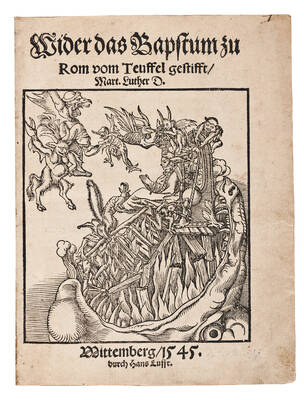
Titelblatt zu: Martin Luther, Wider das Bapstum zu Rom vom Teuffel gestifft, Wittenberg: Hans Lufft, 1545
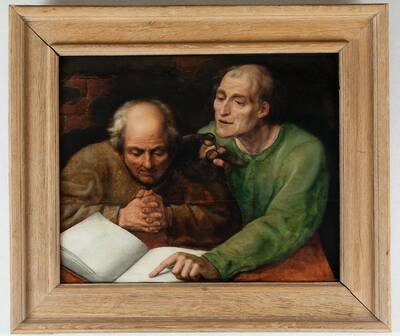
Jan Massys: Die Auslegung der Heiligen Schrift, um 1526
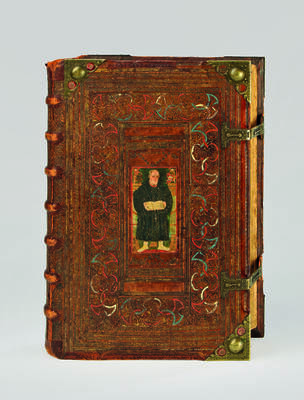
Einband mit Martin Luther zu: Biblia. Das ist, Die gantze heilige Schrifft, Deudsch, Wittenberg: Johann Krafft d. Ä., 1576
.jpg?locale=en)
Der Bildersturm, aus: Jan Luyken & Pieter Christiaensz Bor, Sammelalbum zum 80-jährigen Krieg, 1679–84
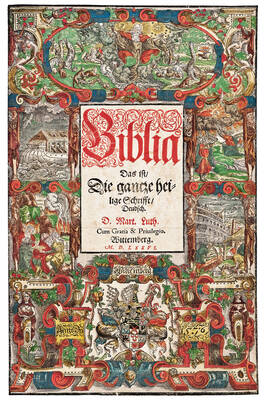
Titelblatt zu: Biblia. Das ist, Die gantze heilige Schrifft, Deudsch, Wittenberg: Johann Krafft d. Ä., 1576
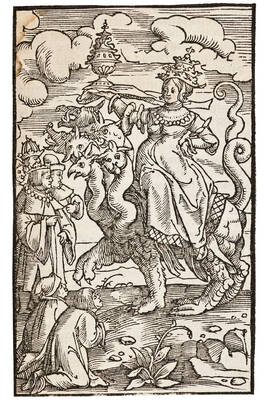
Die babylonische Hure mit der Tiara, aus: Dat heylich Eva[n]gelium. Ende die Epistelen, ende openbaringhen, Antwerpen: Hans van Ruremund d.Ä., 1525